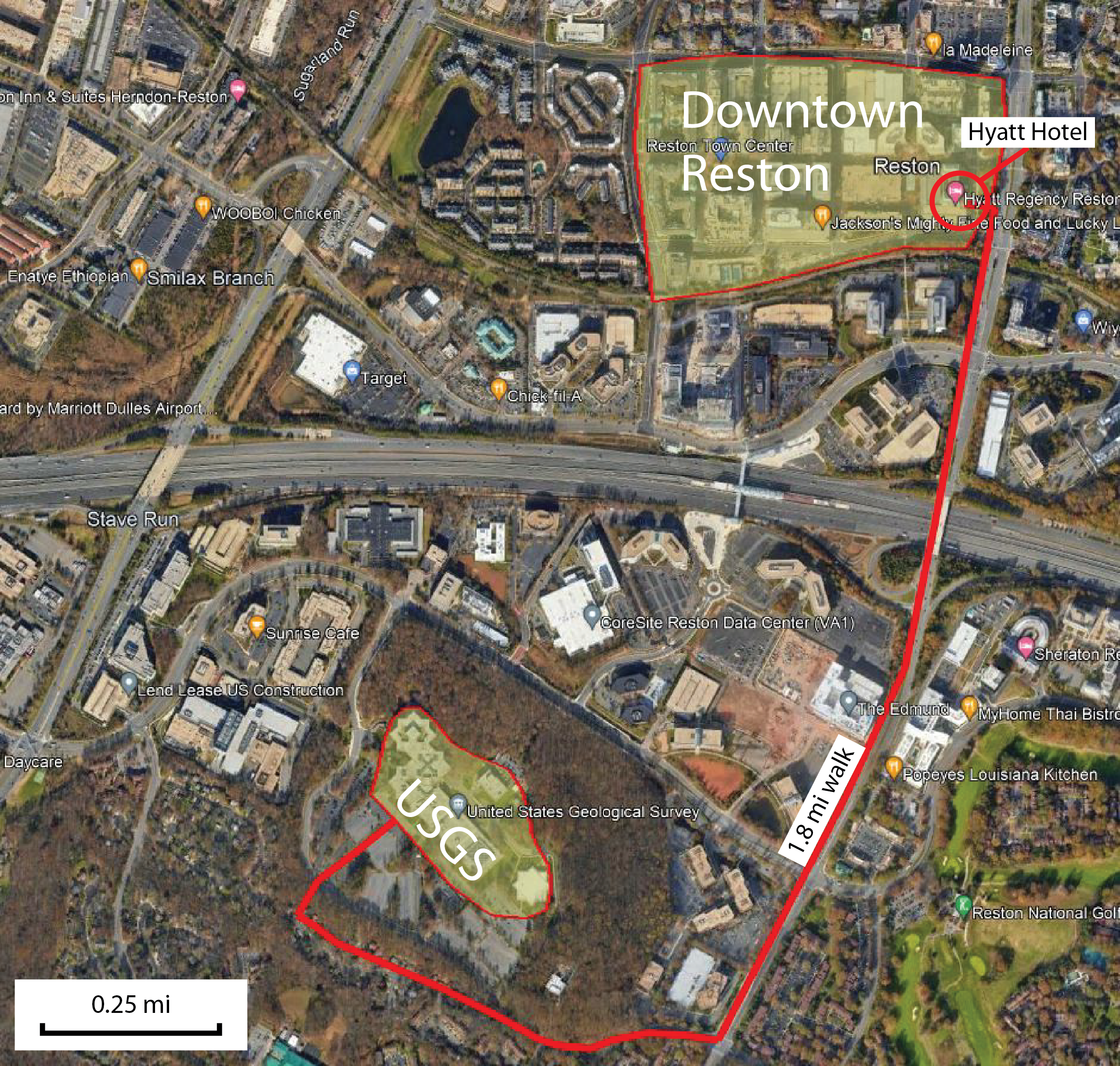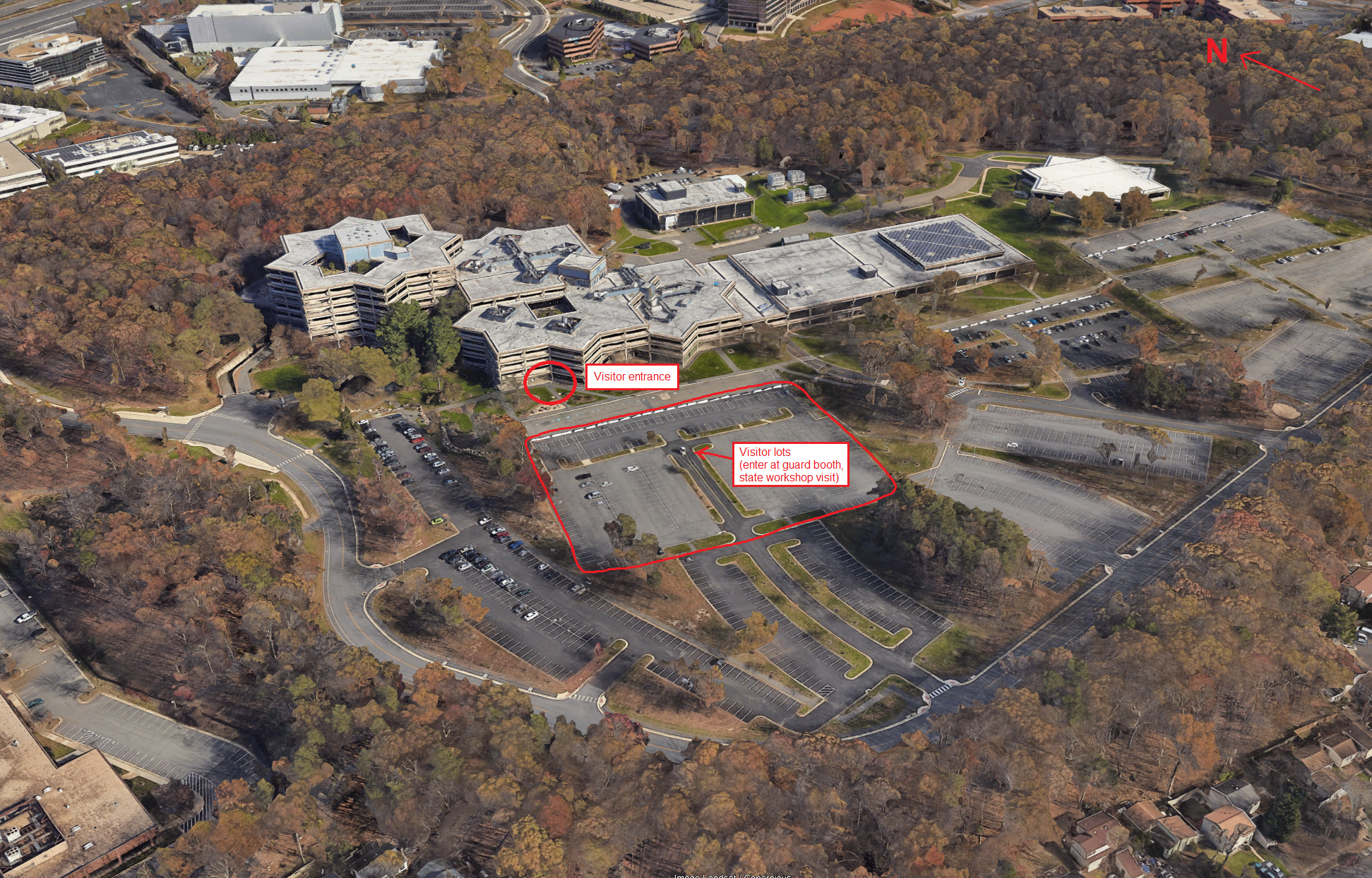meta data for this page
This is an old revision of the document!
ICE-D workshop: San Bernardino, CA (CSUSB), April 26-28, 2023.
Objective
The objective of this workshop is to develop an application area database of exposure-age and related data aimed at measuring long-term rates of fault slip or other tectonic deformation. For the most part, these consist of surface exposure age data from faulted or folded landforms: for example, the distance the landform is offset along a fault, divided by the exposure age of the landform, gives the long-term slip rate of the fault.
This data set differs somewhat from existing ICE-D focus areas in that there exist quite a lot of cosmogenic-nuclide data that are not simple surface exposure ages; these include depth-profile data from fluvial or alluvial landforms as well as some burial-age data. Another difference is that estimating the age of a landform from exposure-age data is often more complex than for, e.g., glacial moraines, because many of these data are from nonglacial environments where nuclide inheritance is nearly always present.
On the other hand, it's an ideal application of the transparent-middle-layer concept because slip rate estimates based on cosmogenic-nuclide data from many major fault systems are distributed among numerous publications using different assumptions and calculation methods. Being able to look at all these data on a common basis with regard to (i) exposure-age calculations, (ii) inference of landform age from an exposure-age distribution, and (iii) inference of slip rate from landform age would be extremely valuable for synoptic analysis.
For more information about the ICE-D project, please visit the Top level page of this wiki
Ideally, the workshop will accomplish the following goals:
1) Attendees will have enough knowledge of how the ICE-D database and associated software works to interact with it, add data to it and quality-control existing data, and contribute to maintaining and improving it. From here, those interested will help compile enough surface exposure-age data related to active tectonics to have a large enough database for useful synoptic analysis.
2) Determine/develop generalized middle-layer calculations for computing exposure ages, landform ages, and slip rates in tectonic settings.
3) Additionally, we would like to get an idea of what non-exposure-age (depth-profile, BD) data exist in the literature as an aid to designing suitable middle-layer calculations.
Topics
– How the infrastructure is set up
– How the database is organized
– How to put data into the database (hands-on)
– Spend some time digging tectonic-related data out of the literature and expanding the database
– What are the middle-layer calculations necessary to compute exposure/landform ages and slip rates
– Brainstorm how best to incorporate new middle layer calculations into the current ICE-D structure
– Webpage layout: exploring options for improved web map interface (e.g., OpenTopography to serve Lidar data?)
Possible extra topics
– Brainstorming possible synoptic applications that use data from ICE-D: Tectonics
– How to use ICE-D data in an embedded web map
– How to build a web application that uses ICE-D data - example could be to combine a database of independent offset observations with exposure ages extracted from ICE-D.
Tentative schedule of events
The workshop is scheduled for 3 days, and each day is laid out roughly as follows:
Day 1: Introduction, database connections, and data entry
– 9:00am - 10:00am: Intro to the ICE-D project, ice breakers, basic concepts of database setup, etc.
– 10:00am - 12:00pm: Check in with everyone to make sure they know how to 1) connect to the database, and 2) add data to the database through our admin page on the website (see tutorial links below for instructions)
– 12:00pm - 1:00pm break for lunch
– 1:00pm - 5:00pm Spend the remainder of the day mining the literature and doing data entry
Day 2: Middle layer calculations for the Tectonics Database Part I
– 9:00am - 12:00pm: review of previous day's topics/intro today's topics, questions, discussion, etc. Add more data to the database (if necessary)
– 12:00pm - 1:00pm: break for lunch
– 1:00pm - 5:00pm: discussion of the middle-layer calculations necessary to compute exposure/landform ages and slip rates and how to incorporate them into ICE-D
Day 3: Middle layer calculations for the Tectonics Database Part II
– 9:00am - 10:00am: review of previous day's topics/intro today's topics, questions, discussion, etc. (if necessary)
– 10:00am - onward: Further discussion of the middle layer calculations, how to incorporate them into ICE-D, and data entry. If folks are interested, we would be happy to spend time going over the potential additional topics (i.e., brainstorm synoptic-scale applications, using ICE-D data in embedded web maps and applications, etc.)
–AFTERNOON FIELD TRIP Tentatively, we might like to take a trip up to a section of the San Andreas Fault less than a mile from the workshop location on campus. More details to come.
The final day is Usually a little more informal. Mainly, we focus on brainstorming ideas of analyses and visualizations one could do with ICE-D and exploring some of these ideas on the fly. Attendees are encouraged to stay as long as they like but if folks need to leave early, after this point we will have hopefully given everyone the tools they need to interact with ICE-D so they won't miss any further instructions.
Pre-workshop preparations/tasks
Much of our process for viewing and adding data to ICE-D has become quite streamlined, but you can help expedite the process even more by taking the following steps prior to the meeting:
Step 1 Come prepared with a brief bio about yourself; what are your interests, current projects you are working on, and what you are hoping to get out of the workshop (5-ish minutes).
Step 2 Determine what personal machine (most likely a laptop) you plan on using for a while to interact with ICE-D (the setup is basically platform-independent and we are using/have used Mac, Windows, and Linux machines). Part of the connection scheme is unique to each individual machine, so it is best to try to pick one and stick with it if you can.
Step 3 Read through our tutorials ahead of time! Inevitably there will be challenges with getting everyone connected to the database but as previously stated things are somewhat streamlined at this point and the tutorials are helpful.
3.1 Find the tutorials for connecting to the database through SQL Clients here: Windows Users | Mac and Linux Users
3.2 Find the tutorial for getting set up and adding data through the admin panel on the ICE-D webpage here: Data entry page
3.3 The general page for connecting to ICE-D, adding data to ICE-D and examples of applications and visualizations also has lots of other info available that attendees are encouraged to check out: ICE-D tutorials, visualization and analysis applications page
Step 4 if you can, and have time for it, come to the workshop with either your own data for data entry or data from a paper or two that you know of that have not yet been entered into ICE-D that are related to tectonics. Furthermore, try to brainstorm ahead of the workshop what sorts of visualizations, applications, and/or analyses you might like to explore using ICE-D Tectonics.
Location details and Logistics
Cal State University, San Bernardino Campus
– Dr. Claire Todd has been coordinating with Joe and Greg about hosting the workshop on campus at Cal State University, San Bernardino. Thank you Claire! The Geology Department has good meeting spaces and suburban vans for transport to and from hotels, airport, etc. during the workshop. We will likely be ordering food from off campus to be delivered during lunch time unless other more viable options become available.
– More location details to come (e.g., building and room number on campus for the workshop, etc.)
Travel
– It appears that several attendees will be local/close to local and may be driving, but for those who are flying into the LA Valley, we strongly encourage you to fly into the Ontario, CA Airport (ONT), not Los Angeles International (LAX) since it is much closer to San Bernardino.
Lodging
– Claire has recommended the following hotels as they are what the University typically relies on for hosting guests:
1) Hilton Garden Inn, San Bernardino 1775 S. Waterman Ave San Bernardino, CA 92408 (909) 806-4040 Booking page
2)Double Tree by Hilton, San Bernardino 285 East Hospitality Lane, San Bernardino, California, 92408-3411, USA (909) 889-0133 Booking page
– Workshop attendees who will be getting reimbursed and/or those who will not have access to a car, we recommend one of the hotels listed here since 1) the hotels are somewhat close to CSUSB and the department my be able to arrange shuttling for you, and 2) we can only reimburse attendees up to ~$1000 per person. Although please feel free to make whatever reservations work best for you. Let Joe know if you have any issues with bookings.
Attendees
Number of people: target 10 participants, plus workshop leaders (Balco, Tulenko) and USGS folks
Target audience: Graduate students, postdocs, early-career faculty who are interested in synoptic analysis of cosmogenic-nuclide data.
Student/early career support
NSF funding is available to support participant travel. At present we believe we can support 10 attendees. Funding will be prioritized by inverse career state: students, then postdocs, etc.
– for those who we can offer support:
1) You will be asked to purchase your own flights, reserve your own hotel rooms, and cover your own per diem expenses
2) Please hold onto receipts and send copies of all receipts to Joe Tulenko (jtulenko@bgc.org).
3) Attendees will fill out a travel form supplied by the Berkeley Geochronology Center.
4) Once all receipts and travel forms are submitted, BGC will send out reimbursement.
NOTE: If purchasing in advance will create a financial hardship, please let us know.
Please email Joe Tulenko (jtulenko@bgc.org) if you have any questions.
Applications
NOTE: applications for this workshop are closed as of Feb 15th.
Some workshop participants have been invited by the organizers. We are also soliciting applications for additional participants. Applicants should have the following properties:
– Involved in research having to do with cosmogenic-nuclide exposure dating of glacier change
– Involved in or interested in using large data exposure-age data sets for synoptic climate or glacier change analysis
– Motivated to participate in the ICE-D project in future by (i) building or maintaining data, (ii) developing new analysis or visualization applications, or (iii) using ICE-D resources for undergraduate/graduate teaching or outreach.
– Some knowledge of programming environments used to build websites and/or analyze data, for example SQL, Python, and MATLAB.
– Most likely a graduate student or postdoc
To apply: submit the following materials to Joe Tulenko (jtulenko@bgc.org) before February 15th:
– A CV
– A letter explaining (i) how you meet the requirements above, and (ii) what you would like to do with the ICE-D databases or infrastructure
A map of Reston, VA with the Hyatt Hotel, downtown, and the USGS highlighted. The Sheraton is also visible.

Oblique view of the USGS Building, highlighting the visitor entrance and visitor parking lot.
